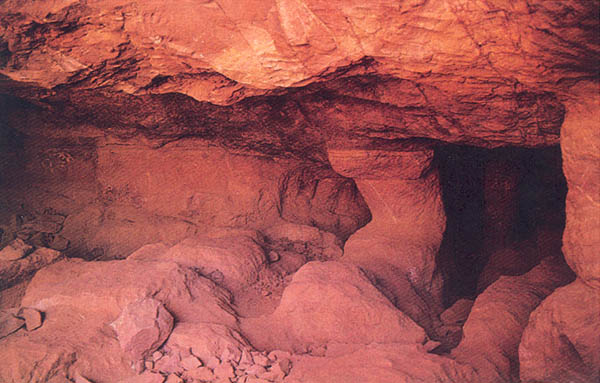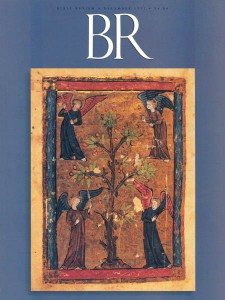Mining the History of the Alphabet at Serabit el-Khadem
Sidebar to: Part III: How the Alphabet Democratized Civilization
The single richest source of information about the world’s first alphabet is the ancient Egyptian mining site of Serabit el-Khadem, in west-central Sinai. The Egyptians were lured to Sinai by turquoise, a semiprecious blue-green stone from which artisans could fashion amulets, scarabs and necklaces. The earliest Egyptian mines in Sinai date to about 2650 B.C.E., but sometime during the XIIth Dynasty (1991–1786 B.C.E.) they moved their operations to the rich veins at Serabit. The photo below shows the view inside one mine.

Serabit el-Khadem operated for at least eight centuries and the site contains some of the most magnificent ruins in the entire vast peninsula. The remains of a temple dedicated to the goddess Hathor still stand on a plateau overlooking the mines; one of the names by which Hathor was known was “Lady of the Turquoise.” (A depiction of Hathor, with her trademark hairdo, can be seen in the foreground of the photo below.) The temple started simply as a cave where the goddess was worshiped; it grew over the centuries as a portico, chambers, halls, courtyards, pylons and room after room were added.
Already a library member? Log in here.
Institution user? Log in with your IP address.

